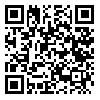Volume 7, Issue 6 (Shenakht Journal of Psychology and Psychiatry 2021)
Shenakht Journal of Psychology and Psychiatry 2021, 7(6): 12-27 |
Back to browse issues page
Download citation:
BibTeX | RIS | EndNote | Medlars | ProCite | Reference Manager | RefWorks
Send citation to:



BibTeX | RIS | EndNote | Medlars | ProCite | Reference Manager | RefWorks
Send citation to:
Amini Masouleh M, Chalabianloo G, Abdi R. Computer-assisted cognitive rehabilitation with and without unihemispheric concurrent dual-site a-tDCS and conventional tDCS on improving the response inhibition in patients with stroke. Shenakht Journal of Psychology and Psychiatry 2021; 7 (6) :12-27
URL: http://shenakht.muk.ac.ir/article-1-725-en.html
URL: http://shenakht.muk.ac.ir/article-1-725-en.html
1- M.A Cognitive Sciences, Psychology Department, Azarbaijan Shahid Madani University, Tabriz, Iran
2- Associate Professor, Psychology Department, Azarbaijan Shahid Madani University, Tabriz, Iran , chalabianloo@azaruniv.ac.ir
3- Associate Professor, Psychology Department, Azarbaijan Shahid Madani University, Tabriz, Iran
2- Associate Professor, Psychology Department, Azarbaijan Shahid Madani University, Tabriz, Iran , chalabianloo@azaruniv.ac.ir
3- Associate Professor, Psychology Department, Azarbaijan Shahid Madani University, Tabriz, Iran
Abstract: (2378 Views)
Introduction: The response disinhibition is one of the most common problems in post-stroke patients. Many studies have shown that transcranial direct current stimulation could improve cognitive impairments by increasing the cortical excitability.
Aim: The present study was performed to investigate the effect of two protocols of direct transcranial electrical stimulation with cognitive rehabilitation in patients with stroke.
Method: The research method was quasi-experimental with a control group. From the population of stroke patients in 2016, 32 people (including 21 men and 11 women aged 40 to 65 years) were selected by purposive sampling method based on including and excluding criteria. All subjects in the study groups underwent Fruit Ninja task training as cognitive rehabilitation and transcranial direct current stimulation and were evaluated by continuous performance, flanker and target stop tasks. Findings were analyzed using repeated measures analysis of variance with SPSS-22.
Results: The results showed that the group that receiving stimulation with unihemispheric concurrent dual-site a-tDCS along with computerized cognitive rehabilitation in comparison to groups with unihemispheric tDCS with & without computerized cognitive rehabilitation & sham stimulation, showed a significant improvement in response inhibition function (P≤0.05). Also, at 8-weeks follow-up, the unihemispheric concurrent dual-site a-tDCS along with computerized cognitive rehabilitation group continued to show better functions in response inhibition tasks than other groups (P≤0.05).
Conclusion: The present results show that the simultaneous use of transcranial stimulation along with cognitive rehabilitation has an effective role in improving cognitive deficits.
Aim: The present study was performed to investigate the effect of two protocols of direct transcranial electrical stimulation with cognitive rehabilitation in patients with stroke.
Method: The research method was quasi-experimental with a control group. From the population of stroke patients in 2016, 32 people (including 21 men and 11 women aged 40 to 65 years) were selected by purposive sampling method based on including and excluding criteria. All subjects in the study groups underwent Fruit Ninja task training as cognitive rehabilitation and transcranial direct current stimulation and were evaluated by continuous performance, flanker and target stop tasks. Findings were analyzed using repeated measures analysis of variance with SPSS-22.
Results: The results showed that the group that receiving stimulation with unihemispheric concurrent dual-site a-tDCS along with computerized cognitive rehabilitation in comparison to groups with unihemispheric tDCS with & without computerized cognitive rehabilitation & sham stimulation, showed a significant improvement in response inhibition function (P≤0.05). Also, at 8-weeks follow-up, the unihemispheric concurrent dual-site a-tDCS along with computerized cognitive rehabilitation group continued to show better functions in response inhibition tasks than other groups (P≤0.05).
Conclusion: The present results show that the simultaneous use of transcranial stimulation along with cognitive rehabilitation has an effective role in improving cognitive deficits.
Type of Study: Research |
Subject:
Special
Received: 2020/10/3 | Accepted: 2020/12/23 | Published: 2021/02/9
Received: 2020/10/3 | Accepted: 2020/12/23 | Published: 2021/02/9
Send email to the article author
| Rights and permissions | |
 |
This work is licensed under a Creative Commons Attribution-NonCommercial 4.0 International License. |








